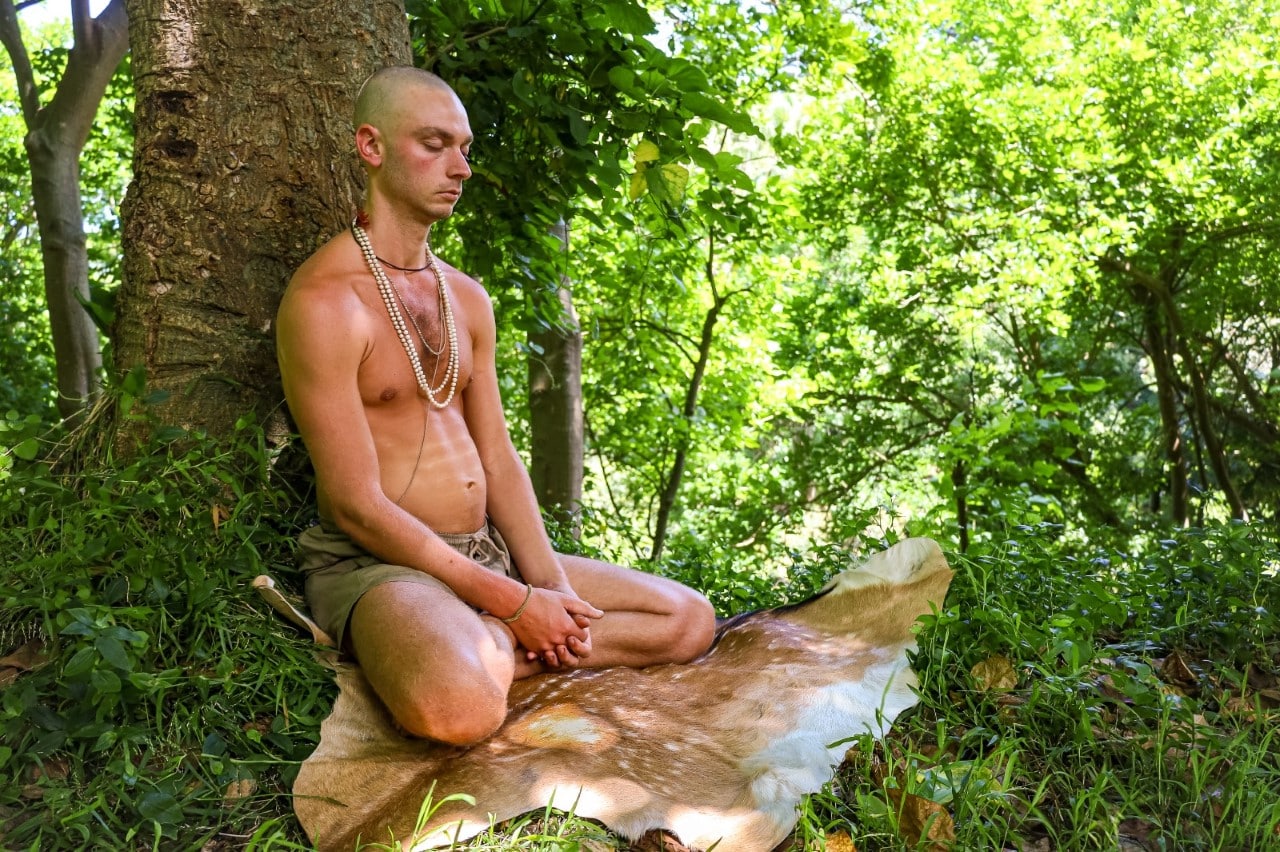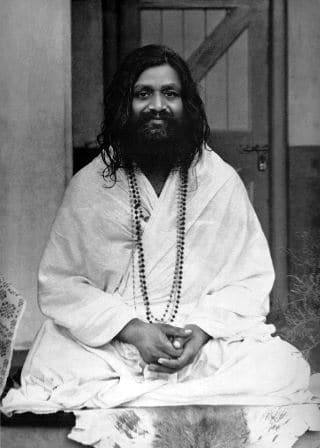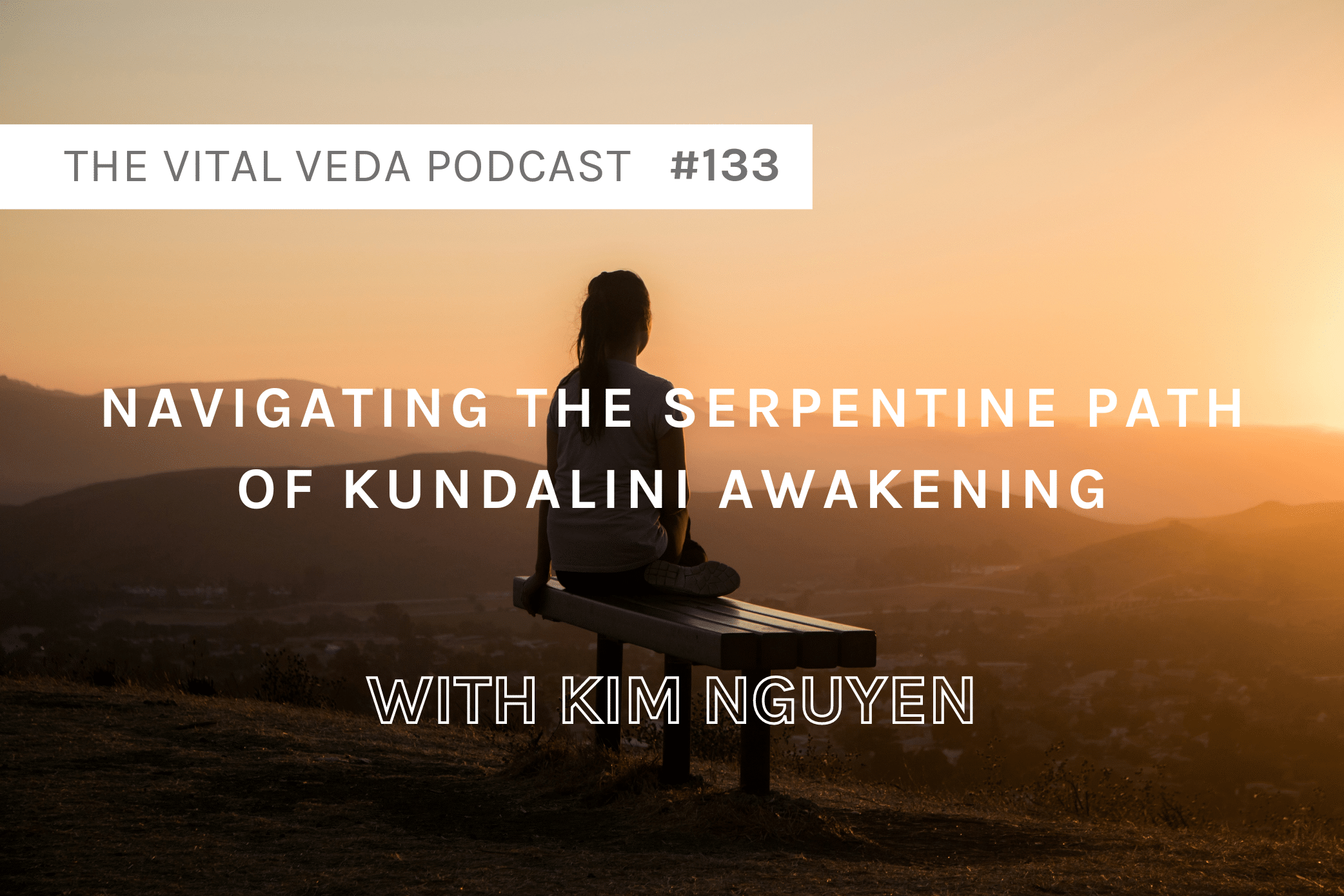Disclaimer:
Read this whole article before forming any opinion or judgments around the ethics of tanning deer skin.
This article contains photos of deer skin and its flesh.
WHAT DREW ME TO DEER SKIN
When I met my friend Ei (@buckywardbucksin) she was telling me about all the different animal hinds that she tans.
Tanning is the process of converting animal skin into leather through a variety of methods. It is one of the practices of “Bush Crafts.”
I was interested in this hobby of hers, as I am mostly always interested in practices people use to connect to nature, especially practices that are radical and unfamiliar to me.
When Ei mentioned deer in the animals she was listing, it immediately sparked my interest further.
I thought about all the Yogis, Rishis (seers) and sages of India that historically meditated on deer skin; including my Guru’s Guru, Maharishi Mahesh Yogi.
NOT ONLY ETHICAL, BUT SUSTAINABLE (FOR ME)
Ei gets her deer hinds from a hunter in upper New South Wales who hunts for deer meat and sells it commercially.
After skinning the deer, the hunter usually throws out the skin into a landfill.
Instead of that, Ei gets the skin from the hunter (for free) and with absolute reverence for the animal, tans the skin and creates a whole range of things (Ei has a whole wardrobe of different animal hinds which she wears at parties, gatherings and during her vision quests and survival camps in the bush).
Ei is one of the most ecologically sustainable persons I have ever met. She doesn’t waste a thing!
She keeps all the offcuts from her leather that she creates to make handbag handles, she keeps the fur that sheds to make fishing lures, cushion stuffing or gives it to the compost, and keep skin scraps and reject skin offcuts to make a traditional glue (apparently this procedure was used to glue together a crashed plane on a stranded island, and it could fly again).
You’ll get a deeper insight into Ei’s sustainability throughout this article.
Due to the ethics and sustainability of this practice, my desire to connect with nature through animals, and a desire to own a deer skin to meditate on, even as a strict vegetarian (I eat eggs occasionally) for nearly a decade…
I would join Ei for 4 long days of tanning my own deer hind.
MEDITATING ON DEER SKIN
Why the Yogis and Rishis meditated or sat on deer skin:
-
Deer skin offers a soft and cushioning experience, which supports a more comfortable meditation.
-
It is said that the deer skin prevented unwanted intruders such as ants, snakes, insects and scorpions from crawling on its surface and harming the meditating yogis.
-
Deer skin effectively isolates the earth’s magnetism, assisting in an unbounded cosmic experience.
-
During meditation, the energy flows upwards towards the crown, and deer skin acts to insulate against the downward pull of the earth’s energy field.
-
The deer skin in its natural form (tanning it with natural substances) still has Prana (life-force) in it, which influences the meditator who sits on it.
Deer skin effectively isolates the earth’s magnetism, assisting in an unbounded cosmic experience.
WHY DEER?
Deer is a Sattvic (pure) animal.
Deers are herbivores or vegetarian. They are also very gentle (sattvic) creatures. The energy which is stored in their skin is considered pure and sattvic, unlike other animal skins which may transmit impurities or bad energies to those who sit upon them.
The deer skin is believed to enhance the solitary tranquility and awareness required by a a meditator or yogi who intends to go very deep (recluse / sanyasi type of people) as they absorb the pure sattvic energy as they sit.
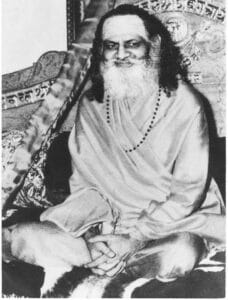
Note that other sattvic herbivores may not produce the “neutral” effects of the deer.
You may have seen Yogis or Rishis sitting on tiger skin. This was more commonly used in invoking the wrathful aspects of consciousness or deities, and denotes rajas (stimulating and dynamic energy) rather than sattva.
Tiger skin is more powerful than deer skin, but is only to be used by yogis with great mastery over their passions or lust (kama) and anger (krodha).

The relationship between Deer and the Mind
Deer represent the fickle nature (chamchalatī – चंचलता) of the mind.
Just as the deer wanders around elusively and is hard to catch, so is the mind. It is always wandering and it is challenging to stabilise a coherent composure with self-mastery over the mind.
This is why it is difficult for people to initiate into meditation or find extended periods of deep meditation challenging (8+ hours/day, usually relevant for reclusive ascetics / “Sanyasis”.).
This is why the texts conveying Lord Śiva (the destruction operator) sitting on Deer skin or holding a Deer in his hands represent the mastery a yogi can have over his mind.
Even in Buddhism, deer or antelope skins serve as meditation seats (asanas) for Buddhist yogis.
The Bhagavad Gita (a spiritual story and the most commentated text in the world) especially mentions deer skin for the purpose of a asana (seat) inverse (6.11):
“In a clean place, having established a firm seat of his own, neither very high nor very low, covered with cloth, deer skin and kusa grass…”
Deer Skin Absorbs Shakti (Divine Energy)
The skin absorbs some of the extra shakti generated during practice and becomes a valuable and nourishing aid each time you sit on it.
This is why people value the seats or cloths that gurus sit on, or the malas (necklaces) that they wear, because it absorbs their potent shakti.
TANNING DEER HIND: THE PROCESS
1. Acquire a Dead Animal or Animal Skin
This can be done in many ways such as:
-
Scavenging skins that hunters usually dispose of (we did this)
-
Harvesting roadkill (has to be warm/a fresh kill)
-
And of course hunting (if you choose this, we recommend to do sustainably with reverence)
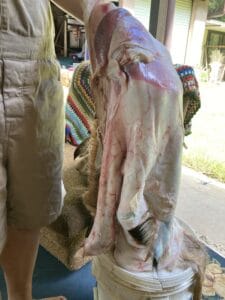
2. Skin the deer
While the dead animal is still “warm”, skin it and preserve the skin in a freezer or salt or start the tanning process. This prevents “hair slip” – which is when the fur falls out, and from going rotten.
Unfortunately, I missed this as I had to travel for Eis workshop.
This would have been (emotionally) hard for me to see, and definitely harder to do myself, but I believe it is crucial to be able to handle whatever substance you are utilising in all its forms and stages, including its raw and gruesome forms.
For tanning leather when keeping the fur, the whole time you are working on the “inside” of the skin.
3. Scrape Off Excess Fat and Flesh
Following these steps:
-
Once you have the skin, prop it up on a smooth log (Ei made this little apparatus).
-
Keep some towels below the skin as padding so the skin doesn’t cut against the wood.
-
Keep some plastic against you for cleanliness.
-
Using a specific scraper, scrape off the remaining flesh, fat and bone-marrow. This can be kept for your pet dog to eat.
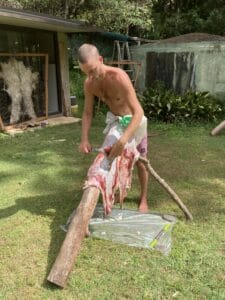
This was the most confronting part for me: receiving the fleshy skin from the hunter. I wasn’t expected to be confronted or grossed out. But being a vegetarian for nearly a decade and having aversion to meat, it was like being a butcher. I soon got over it and was less previous about my hands getting dirty.
Here was a profound and beautiful connection with the individual soul of this deer. Although only the skin and some flesh remained, a unique Prana (life-force) of that soul still emanated out of the skin.
I could further understand why burning bodies assists in liberating the soul from earth into the other realms (lokas).
4. Tie Up the Skin on a Rack/Frame
Ei made these wooden frames to fit the skin.
Following these steps:
-
Hammer in nails that stick out a couple of inches apart.
-
Cut a hole around the edges of the skin. Use a sharp knife. It would be good to have something like a hole puncher.
-
Using a strong steel cable or wire rope, thread through the holes and tie up to the nails to stretch the skin.
-
Don’t tie tight as it will be adjusting as you go around the skin and frame.
-
It’s really good to use the “Rolling Hitch Knot” as you can adjust the tightness or loosens.
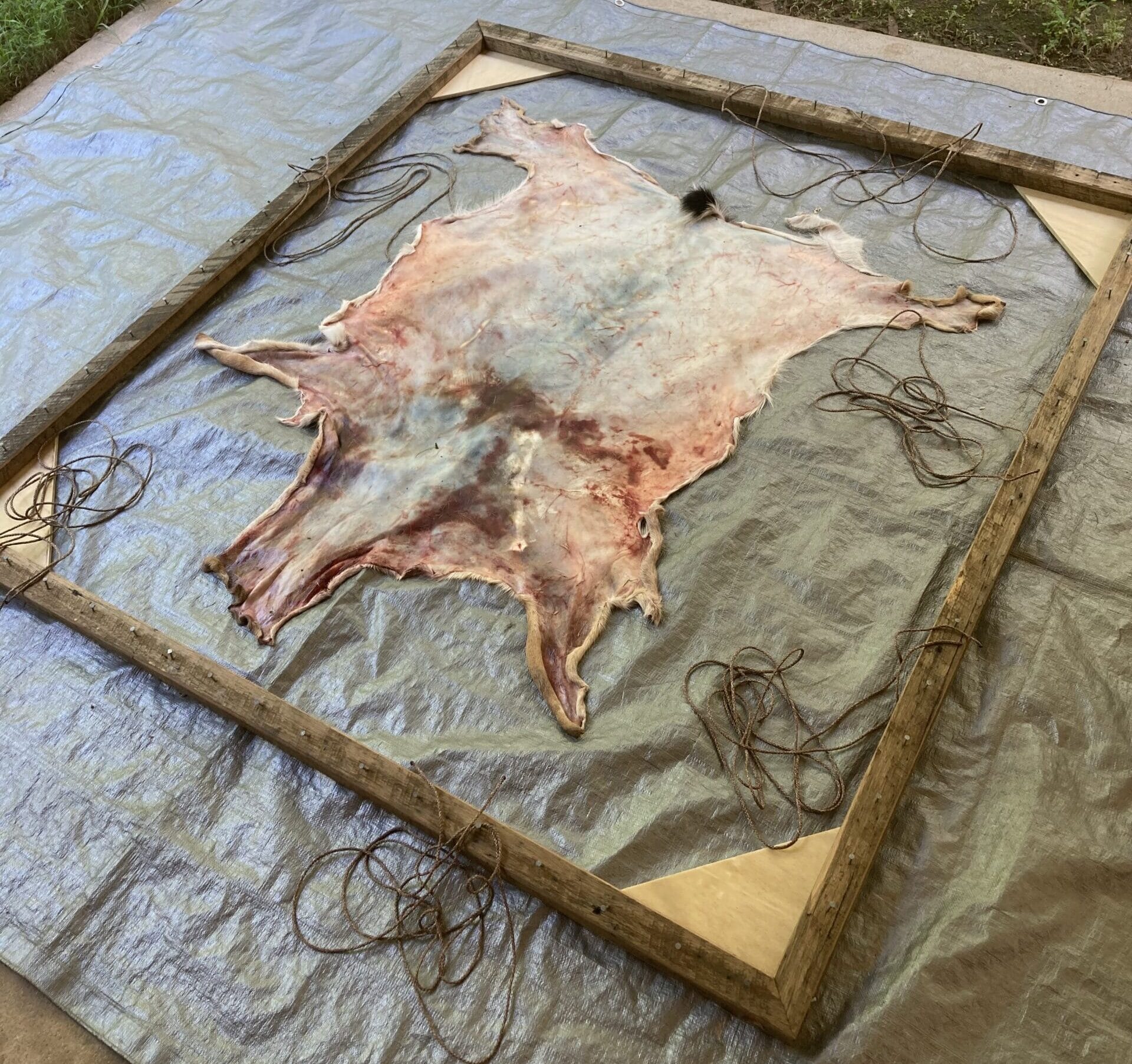
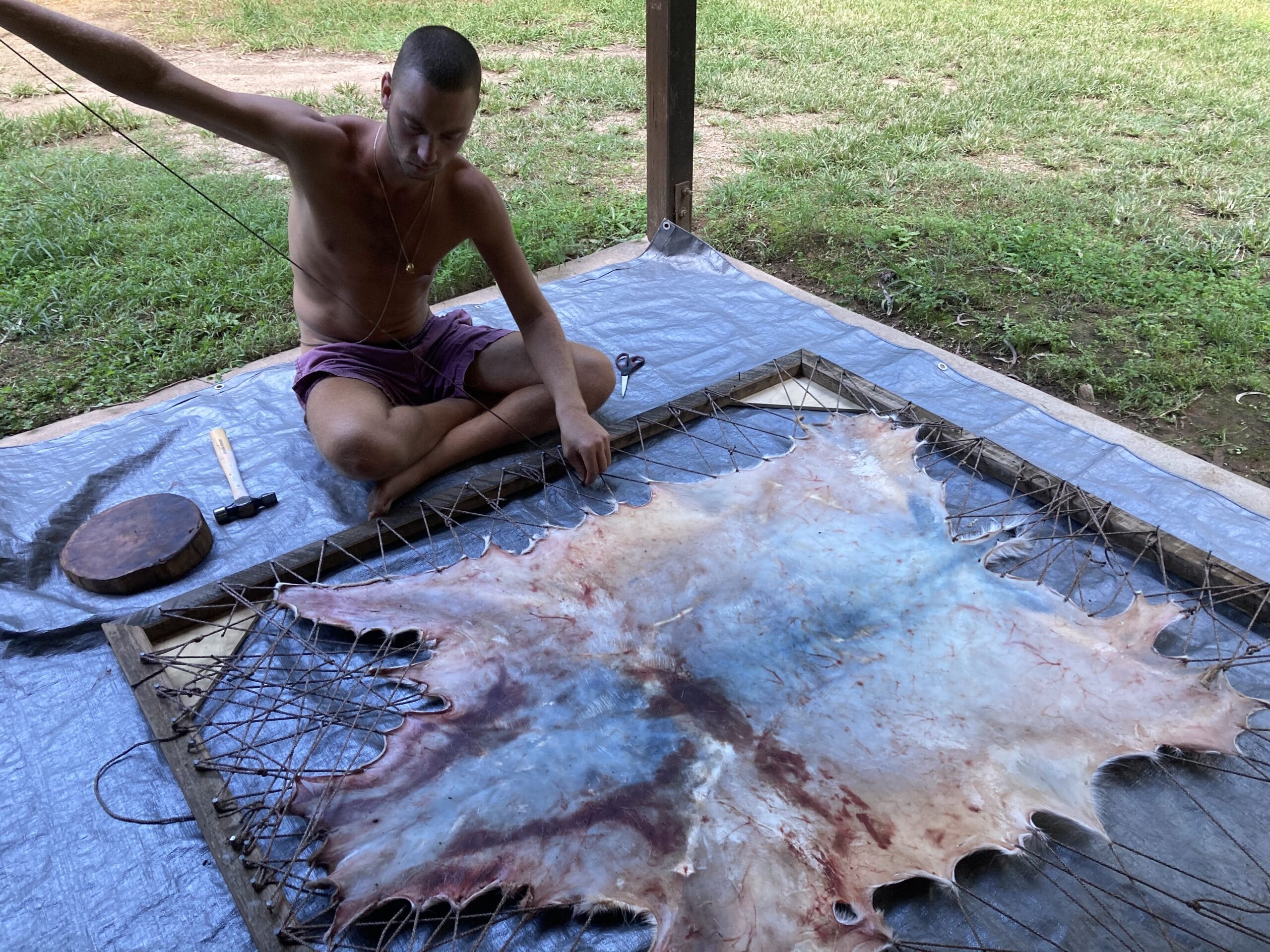
5. Rack and Dry
Leave in a warm and dry place to dry.
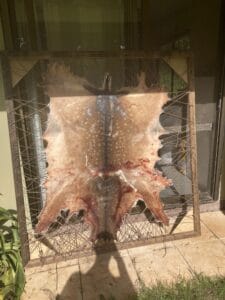
6. Scrape Remaining Flesh & Membrane
-
With a specific scraper, scrape the remaining flesh and membrane.
-
This will kind of be like shaving off dried meat.
-
Don’t go too hard to rip the skin, but it is pretty sturdy.
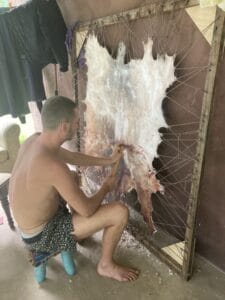
7. Dress the Skin in Brains
-
We use the brains of that animal as an emulsifying agent.
-
Basically painting fats of the brain into the skin to replace mucous.
-
The fats of the brains are dissolved and cooked in water to make the emulsifying agent.
-
It is basically a primal and the most suitable leather conditioner.
-
It is said every animal has enough brains to dress their own skin.
-
We could not get the brain of the deer, so we got the brain of goats from a local butcher.
8. Sow Up Any Holes
-
Any holes or tears to sow up can be done now (or basically anytime in the process).
-
This is important before softening as the softening may stretch tears that are present.
-
The fibre for sowing can be sinew harvested from a kangaroo tail or similar fibre threads.
9. Softening
-
This is the most laborious and trickiest part.
-
While the skin is tied up to the rack and wet with the brains, it becomes soft and moist.
-
With a thick wooden stick or (traditionally) the elbow bone of the animal, push the stick into the skin, softening and loosening it. You are basically opening up the fibres of the skin to allow the brains to penetrate into the fibres.
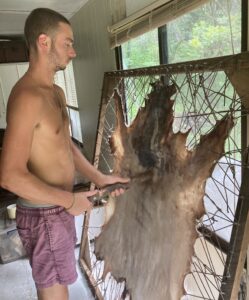
-
You are doing this while the skin is drying. So basically, you are “fighting” against the drying process – as the skin is drying, the fibres close, tighten up and become rough. The constant “digging” or pushing into the skin is down the opposite – it is loosening and softening the skin. You basically have to do this for a whole day until the skin is dry. This way, it didn’t dry by itself and became shrivelled up and hard. It dried while you were working against that process so it didn’t shrink to much and get hard.
-
Doing this in a warm environment will make the process quicker and less laborious. You don’t want it to be too warm or you won’t “keep up” the drying/tightening process. When I did it, it was raining and cold, so I softened in a small shed with a heater on.
10. Smoking
-
The hard part is done.
-
The hind now needs to be smoked to get rid of all bacteria. This will help preserve the hind and prevent hair slip.
-
For smoking we used a homemade denim smoker made by genius Ei. Literally recycled denim jeans with some racks inside.
-
We clipped the hind inside the denim. For smaller hinds/skins, you can make a mini clothes line inside the smoker.
-
We burnt Pandanus wood from the local palm-like native shrub because the wood burns really well and long. We the burning wood in a large tin in the smoker for the whole day and re-lit the wood only 1-2x.
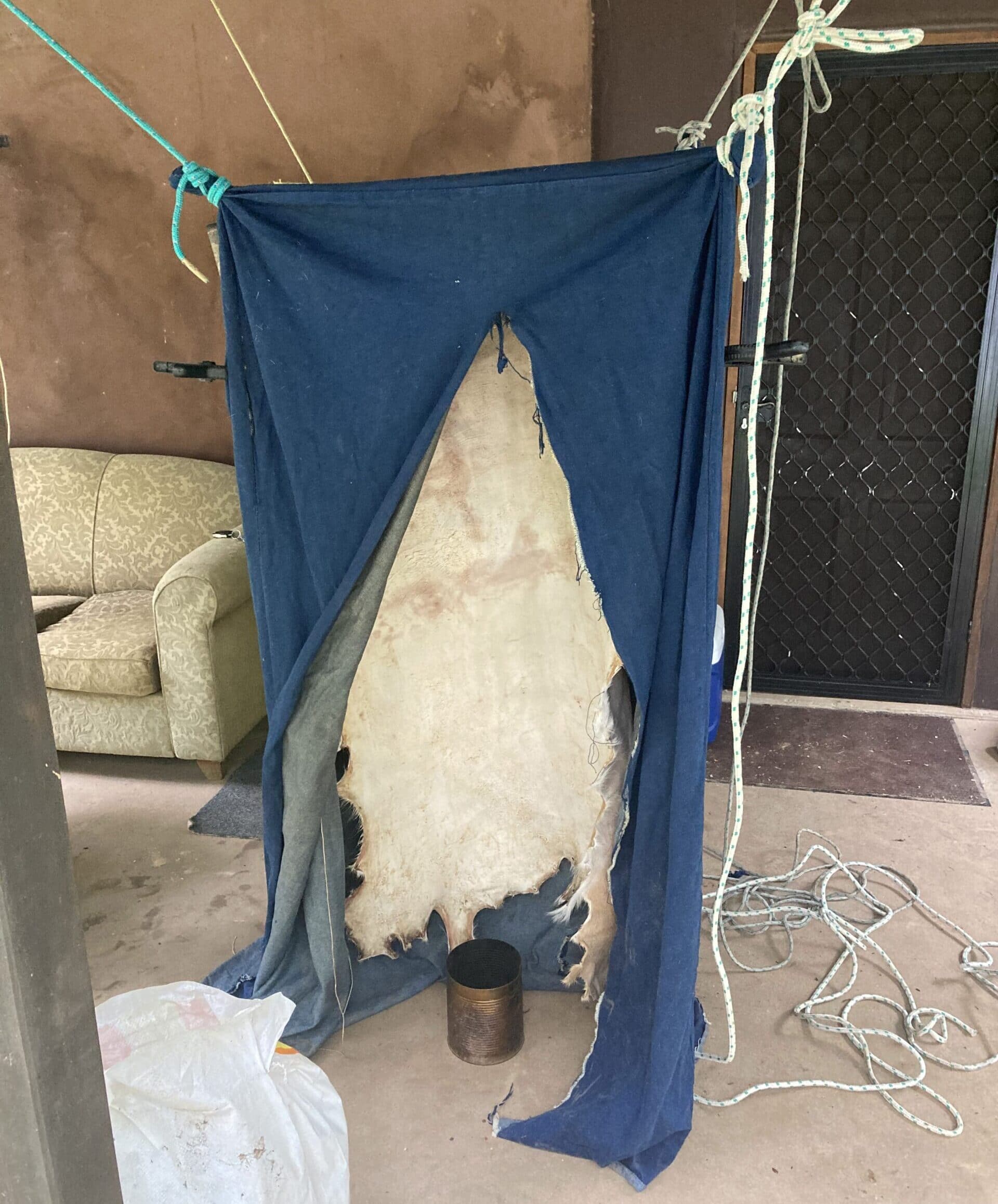
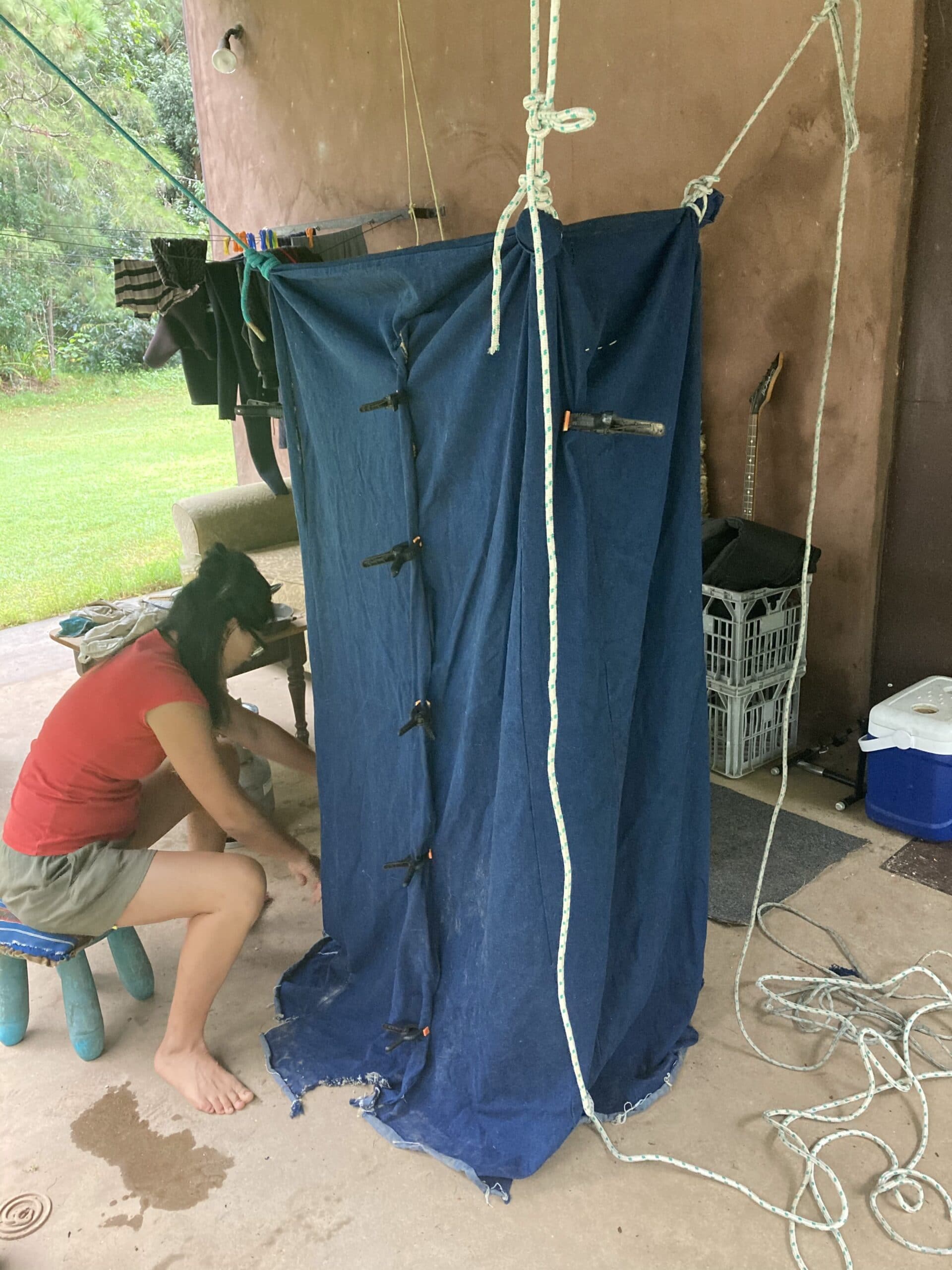
11. Wash and Dry
- Only wash when the weather is warm enough to dry the skin.
- Hand wash the hind with a wool softener or baby shampoo in a bathtub or big bucket.
- Wash till the water is pretty clean.
- Washing is to remove the strong smoky smell.
- Dry in the sun or warm environment.
- I made the mistake of washing on a rainy day and hence dried it in front of a gas heater that was too hot. This made it way too dry and hard, and I had to later do another softening!!
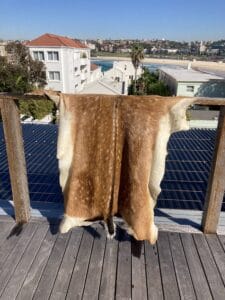
12. Trim and Finish
- Cut off with quality scissors the holes, tears, off-pieces to shape the edges well.
- Cut the offshoots in a shape where you can reuse them – sowing together for handbag handles or glue.
- It’s ready!

